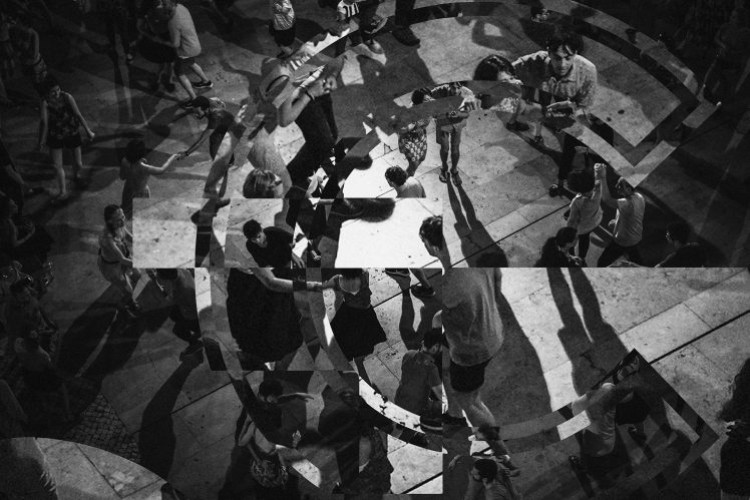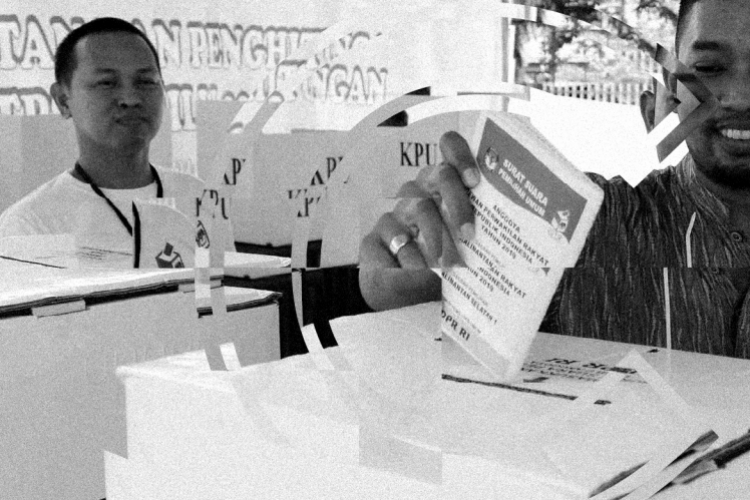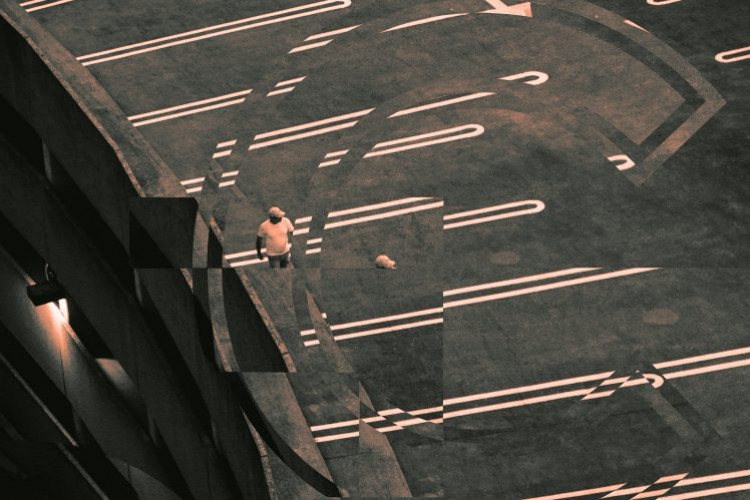
On the second week of the New Year, Jakarta halted for a moment. Following up threats, terror attacks within the city centre shook up the nation and eventually spread through international news. The shootout and bomb blasts that occurred in Sarinah, Thamrin, captured immediate reactions and responses from the surrounding of the attack where Indonesian citizens soon respond, defining terrorism defiance in their own way particularly through social media.
The #KamiTidakTakut or We Are Not Afraid hashtag that defies the terror acts was originated from President Joko ‘Jokowi’ Widodo in his initial response to the press, and was quickly picked up by locals in unifying against the awful occurrence. Gaining immediate attention through social media, the online fearlessness from Tukang Sate Pak Jamal, other street snack sellers, and members of citizens who appeared in the scene of the attack becomes the focus of the aftermath. Yet, how much fearlessness is asserted in #KamiTidakTakut?
Satay seller Pak Jamal, was spotted close to the scene of the attacks as he continued grilling his satay goods during the occurrence. When asked, Pak Jamal and his wife, Heni, preferred to stay for the sake of their business. The photograph of Pak Jamal selling by his satay cart was not the only proof of business-runs-as-usual within the scene of the attacks. As the event invites curious passers-by watching, journalists reporting nearby, along with police and military authorities, it brings an opportunity to street food sellers to gain benefit and satisfy customers.
In following occurrences that happened after the main attacks, what became news were people like Pak Jamal, mobile street sellers approaching crowds in the surrounding, witnesses taking selfies at the location of the attacks that seemingly mirrors to visiting a famous city landmark. #KamiTidakTakut was emphasised by netizens to the way we react despite of the horrifying act. Given the situation and scale of the attacks, we praise people like Pak Jamal for his bravery in choosing to stay. Yet, when the media questioned in responding to his fame, it appears that his bravery is also based on society’s way of responding to the ordinariness of the attacks.
Did the attention of the phenomenon shifted from the attacks to these namely fearless people, or are we tired of news banality of terrorism?
When compared, no terror attacks is less violent or less forgivable – none of these are, and never will. Any attack of terrorism is intolerable. Yet, it is not exactly new news. It has become so common for society to go through these acts though we still question the logic of it.
Through this rapid development of an explosive information age, we seek news through different resources and outlets. Social media has played an essential role as news resource through real-time experience and key eyewitnesses. Though the genuineness of the source is always questioned, these platforms do act as news resource.
Based on a research done by the Media Insight Project on ‘How Millenials Get News’, “… news and information are woven into an often continuous but mindful way that Millenials connect to the world generally, which mixes news with social connection, problem solving, social action, and entertainment.”
Pak Jamal’s viral photograph and his reasoning on not fleeing in panic is related news to the event, as street sellers who reacted like himself is not common in the banality of it. Crowds gathering near the site and taking selfies or documenting videos play part in associating themselves in the event, without taking the role of the attacker or the victim. For us who affirm that we are fearless through #KamiTidakTakut are also playing part to the association, not only to defy, but how we intertwine ourselves to the event. Therefore, it was easy for us to branch out jokes through social media regarding the attack, such as creating more memes and spin-off hashtags. Not only has it become a news resource platform, but social media has also lifted opportunities to create more news in relating to the occurrence, mostly to reach urban youth middle class society in depicting our reactions in our own attitudes.
In a society where attention is essentially praised, and fifteen minutes of fame is always chased, the terrorists’ “accomplishment” seem to not convince the majority as those who defy were louder. From spreading awareness and support of prayers, we all want to associate ourselves whether it’s by going into the scene and photographing yourself within, or recording the attacks, or by participating in the #KamiTidakTakut hashtag from asserting strong defiance to humour attempts.
The attacks on the 14th January may portray that our unity of those against terrorism is louder than those who disrupt the peace. Still, this does not give the excuse for us to be ignorant, finding ways in associating ourselves by being the centre of attention and to be part of the scene to seek likes. Through social media, our way of associating to such events should be with respect to others, empathetic in support and strengthening each other in being resilient against terrorism. Pak Jamal stayed so he could continue to live, he did not stay for the attention in your social network news feed. He did not stay so he could be praised in fuelling #KamiTidakTakut.
It was these pictures in our social media networks shared and re-shared that define the new news, the emphasis on our citizen’s fearlessness. It was the humour attempts, the memes, the spin-off hashtags that lead us away from the banality. Nevertheless, our fearlessness should stand as assertive as Pak Jamal’s decision to stay, as bold as the police who took quick actions during the attacks, as defiant as the witnesses in helping the injured. We have exclaimed that #KamiTidakTakut, but are we only loud through a typed hashtag?
“Louder in Hashtag” ditulis oleh:
Yanti Sastrawan
Balinese-ish, Nutella enthusiast. Aside from wandering through parks and paths, she finds passion in picture books, illustration, as well as storytelling, and highly supports dance recesses.











